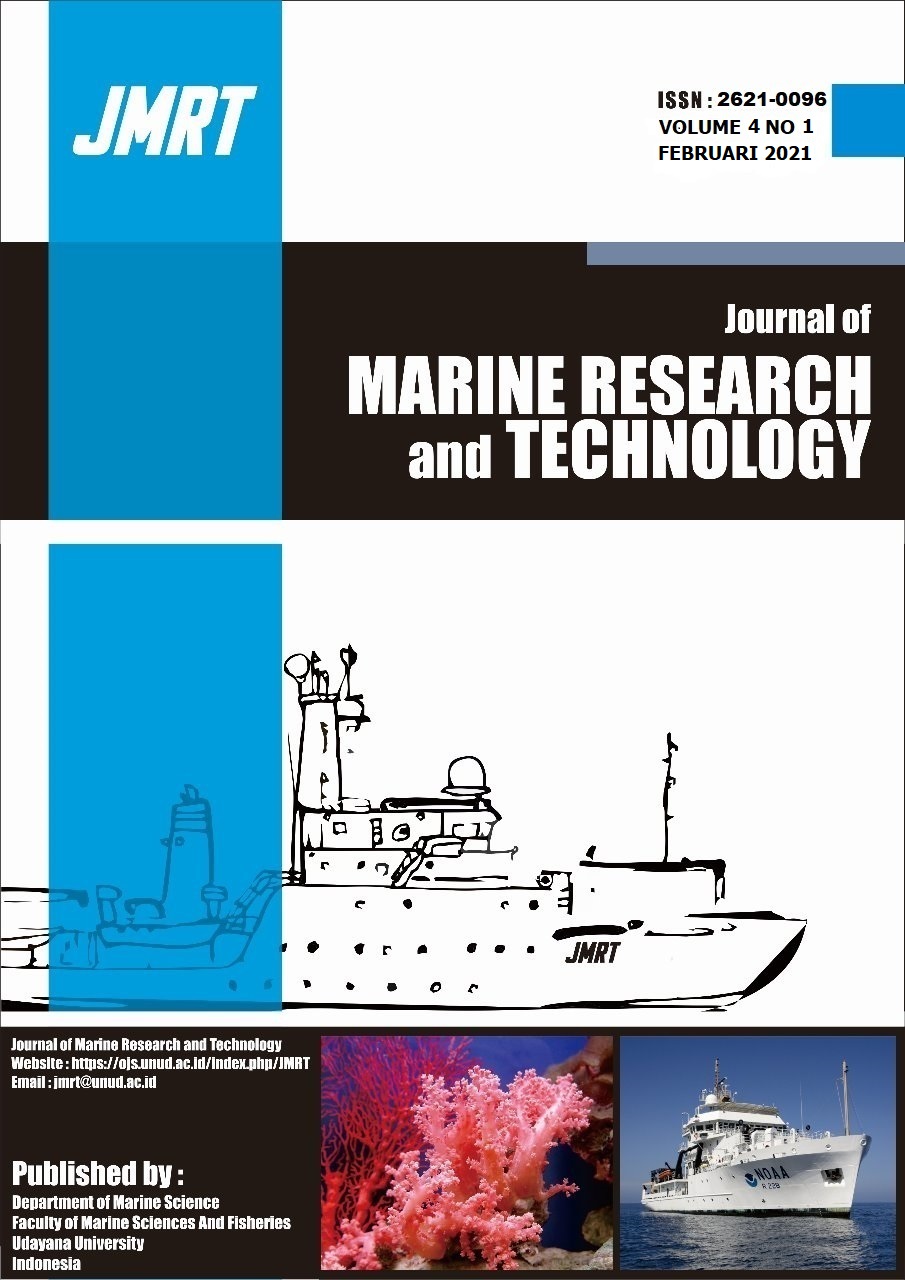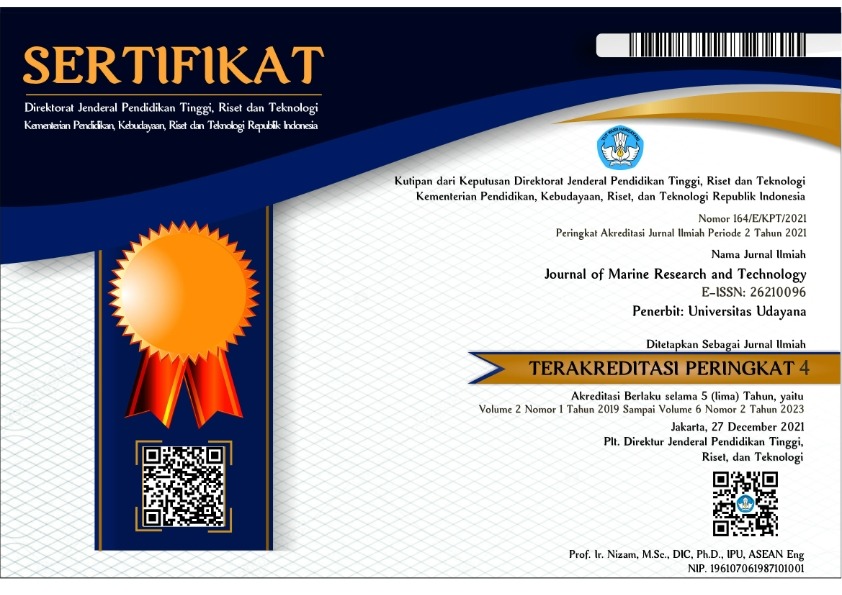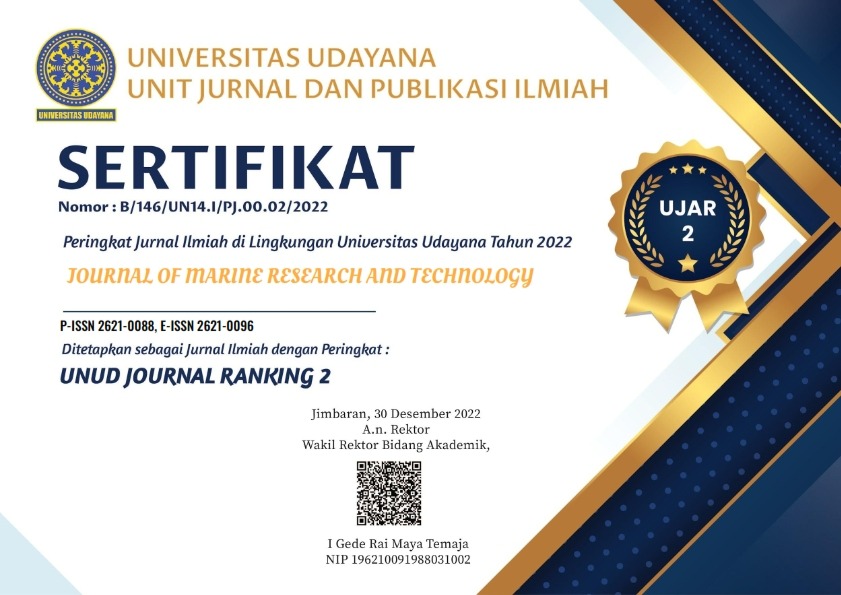Struktur Komunitas Ikan Karang di Area Ponton Quick Silver, Perairan Toyapakeh, Nusa Penida
Community structure; Live coral; Quick Silver utilization area; Reef fish
Abstract
The availability of coral reefs as habitat is closely related to the exsistence of coral fish resources in the waters. Coral fish resources are very important for tourism, as an object sought after by tourist because of their diverse and charming colors and shapes. Reef fish abundance depends on coral cover. This research was conducted in February 2020. The percentage of coral cover was collected using the Under Water Potography Transect (UPT) method and the visual census method for reef fish communities at five research stations located in the area of the Quick Silver’s pontoon, Toyapakeh, Nusa Penida with area of 20.000 . Based on the results, the diversity index in the first data collection ranged from 3.18-3.76, which means the diversity isin the high category. On the other hand, the diversity index in the second data collections tends to decrease in the range of 2.66-3.40, which means that the diversity is in the medium to high category. The uniformity index for the first and second data collection falls into the category of distressed communities. The dominances index on the two data found inj the low category. From this research, it was also found that the percentage of live coral cover in the area of use of the Quick Silver pontoon ranged from 0.08% to 17.32%, which means that all research stations were classified as bad. These results indicate that the presence of reef fish is not only caused by live corals but also by anthropogenic activities of the pontoon, such as manual feeding by visitors. This condition applies to reef fish with omnivore eating behavior, one of which is the Pomacentridae family of the major fish group. These anthropogenic activities can change the composition of reef fish communities and increase abundance.
Downloads
Copyright Notice
The copyright to this article is transferred to Journal of Marine Research and Technology (JMRT). The copyright transfer covers the exclusive right and license to reproduce, publish, distribute and archive the article in all forms and media of expression now known or developed in the future, including reprints, translations, photographic reproductions, microform, electronic form (offline, online) or any other reproductions of similar nature.






